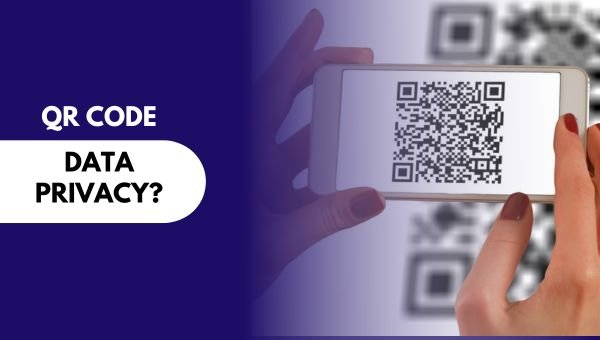QR codes, those pixelated black and white squares we often encounter in our daily lives, have become increasingly prevalent in recent years. From scanning codes to accessing websites and making payments to sharing contact information and event details, QR codes have revolutionized how we interact with the physical world using our smartphones. However, as QR codes grow in popularity, it is essential to understand their impact on our data privacy.
 QR codes, short for Quick Response codes, are two-dimensional barcodes that store information. They can encode various types of data, such as website URLs, email addresses, phone numbers, and even Wi-Fi credentials. All it takes is a quick scan with your smartphone’s camera, and you can instantly access the encoded information or perform specific actions. The convenience and ease of use make QR codes incredibly popular across industries and sectors.
QR codes, short for Quick Response codes, are two-dimensional barcodes that store information. They can encode various types of data, such as website URLs, email addresses, phone numbers, and even Wi-Fi credentials. All it takes is a quick scan with your smartphone’s camera, and you can instantly access the encoded information or perform specific actions. The convenience and ease of use make QR codes incredibly popular across industries and sectors.
In recent years, QR codes have been increasingly used as a tool for marketing campaigns, ticketing, and contactless payments. This surge in adoption has raised concerns about data privacy. ExpressVPN’s guide to QR codes emphasizes the importance of taking proactive steps to protect your data privacy when interacting with QR codes. When scanning a QR code, you might unknowingly provide access to personal information or be directed to a website that collects and tracks your data. As a result, it’s crucial to be cautious and mindful of the potential risks associated with QR codes.
Here are some key considerations when scanning QR codes:
1. Source Verification:
Before scanning a QR code, ensure that it comes from a trusted source. Fraudulent QR codes can redirect you to malicious websites or initiate unauthorized downloads, compromising your privacy and security. Be cautious when scanning codes in public spaces or from unknown senders.
2. Read Permissions:
When scanning a QR code, pay attention to the permissions requested by the scanning app. Some apps may request access to your camera, contacts, or other sensitive information. Review and understand the permissions before granting access.
3. Check for HTTPS:
When a QR code leads to a website, ensure the URL begins with “https” rather than “http.” The presence of HTTPS indicates a secure connection, encrypting the data exchanged between your device and the website. This helps protect your information from potential eavesdropping or tampering.
4. Beware of Phishing:
QR codes can be used to deceive users into disclosing sensitive information. For example, a malicious QR code might redirect you to a fake login page designed to steal your credentials. Stay vigilant and be cautious of unexpected login prompts or suspicious requests for personal information.
5. Consider QR Code Generators:
If you’re creating your own QR codes, use reputable QR code generators that prioritize data privacy and security. Be cautious of generators that might store or track the data encoded in the QR codes, potentially exposing your information to third parties.
QR codes have undoubtedly simplified many aspects of our lives, offering convenience and efficiency. However, it’s crucial to balance the benefits with the need to protect our data privacy. By following best practices and being mindful of potential risks, we can make the most of QR codes while minimizing the chances of compromising our personal information.
In an increasingly digital world, it’s essential to stay informed and take proactive steps to safeguard our data privacy, understanding the potential risks and adopting the necessary precautions. With the right knowledge and awareness, we can navigate the QR code landscape with confidence, knowing that our data privacy remains intact.







